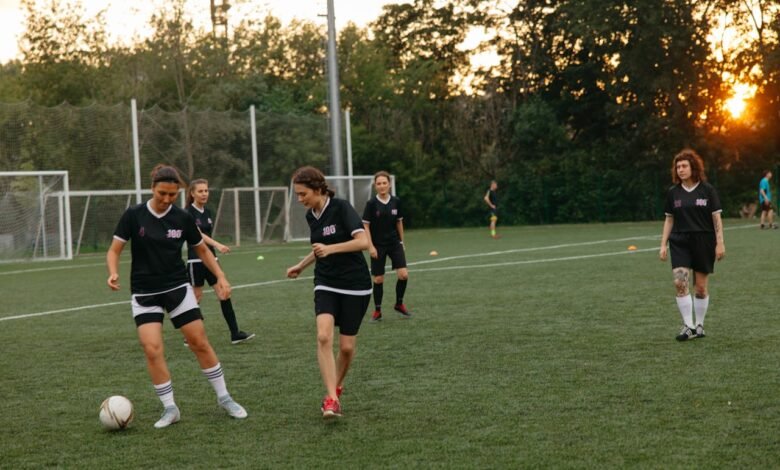
The United States Women’s National Soccer Team (USWNT) has long been a dominant force in international soccer, winning four World Cup titles and four Olympic gold medals. Despite their remarkable success on the field, the team has faced an ongoing battle off the field: the fight for equal pay. In recent years, the USWNT has taken significant steps towards achieving pay equity with their male counterparts, but disparities still exist, particularly in World Cup bonuses.
The Road to Equal Pay
The USWNT’s journey towards equal pay has been long and arduous. In 2016, five prominent players filed a complaint with the Equal Employment Opportunity Commission, accusing the U.S. Soccer Federation of wage discrimination. This action set the stage for a broader lawsuit in 2019, where 28 players sued the federation for gender discrimination and unequal pay6.
After years of legal battles and public pressure, a significant breakthrough came in February 2022. The USWNT reached a $24 million settlement with the U.S. Soccer Federation, which included:
- A lump sum payment of $22 million to the players
- An additional $2 million to benefit players in their post-career goals and charitable efforts
- A commitment from U.S. Soccer to equalize pay between the men’s and women’s national teams in all competitions, including the World Cup2
The World Cup Bonus Disparity
While the settlement and subsequent collective bargaining agreements have made significant strides in equalizing pay for friendly matches and many tournaments, the World Cup bonus structure remains a point of contention. This is primarily due to the vast difference in prize money allocated by FIFA for the men’s and women’s tournaments.
World Cup Prize Money Comparison
| Tournament | Total Prize Money | Winner’s Share |
|---|---|---|
| 2018 Men’s World Cup | $400 million | $38 million |
| 2019 Women’s World Cup | $30 million | $4 million |
| 2022 Men’s World Cup | $440 million | $42 million |
| 2023 Women’s World Cup | $110 million | $10.5 million |
As evident from the table, despite recent increases in the women’s prize pool, a significant gap remains between the men’s and women’s tournaments210.
The Current Situation
Under the new agreements signed in 2022, the U.S. Soccer Federation has taken an innovative approach to address this disparity:
- Both the men’s and women’s teams will pool the FIFA prize money received from World Cup performances.
- After giving 10% to U.S. Soccer, the remaining 90% will be split equally between the two teams10.
This arrangement means that even if the USWNT exits the tournament early, they could potentially earn more than the tournament winners due to the pooling of funds with the men’s team.
The Ongoing Challenge
Despite this groundbreaking agreement within U.S. Soccer, the USWNT continues to advocate for broader change. The team and its supporters argue that true equality won’t be achieved until FIFA significantly increases the prize money for the Women’s World Cup to match that of the men’s tournament.
Impact Beyond Soccer
The USWNT’s fight for equal pay has implications far beyond the soccer field. It has:
- Sparked conversations about gender pay gaps in other sports
- Inspired women in various industries to advocate for fair compensation
- Highlighted the economic value of women’s sports
- Challenged traditional notions about the marketability of women’s athletics
Looking Forward
As the USWNT continues its quest for complete pay equity, including World Cup bonuses, their efforts serve as a beacon for gender equality in sports worldwide. Their success could pave the way for similar changes in other countries and sports, ultimately leading to a more equitable landscape for all athletes.

FAQ
Q: Why were the USWNT paid less than the men’s team in the past?
A: The U.S. Soccer Federation argued that the pay disparity was due to differences in revenue generation and market forces. However, the USWNT contested this, pointing out their superior performance and comparable revenue generation6.
Q: How does the new agreement address World Cup bonuses?
A: The new agreement pools FIFA World Cup prize money for both teams and splits it equally after U.S. Soccer takes a 10% cut10.
Q: Does any other country have a similar equal pay structure for their soccer teams?
A: While some countries like Australia have proclaimed equal pay agreements, the U.S. is unique in its approach to equalizing FIFA World Cup prize money10.
Q: How much did the USWNT receive for winning the 2019 World Cup compared to the men’s team?
A: The USWNT received $4 million for winning the 2019 World Cup, while the men’s team would have received $38 million had they won in 20182.
Q: What other benefits did the USWNT secure in their new agreement?
A: The agreement includes equal pay for game appearances and tournament victories, equalized game bonuses, and improved working conditions11.
Conclusion
The USWNT’s fight for equal pay, particularly in World Cup bonuses, represents a significant moment in the broader struggle for gender equality in sports. While substantial progress has been made, the team continues to push for complete parity on the global stage. Their persistence and success serve as an inspiration and a catalyst for change, not just in soccer, but across all sports and industries where gender pay gaps persist.
As the world watches the USWNT compete in international tournaments, their performance on the field will undoubtedly be matched by their continued advocacy off the field. The quest for equal World Cup bonuses is not just about fair compensation for these elite athletes; it’s about recognizing the value of women’s sports and setting a standard for equality that reverberates far beyond the boundaries of the soccer pitch.



